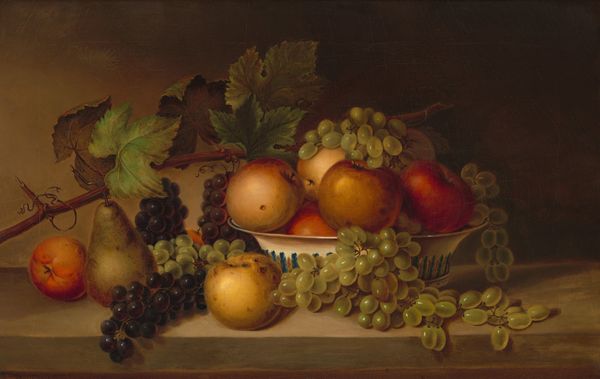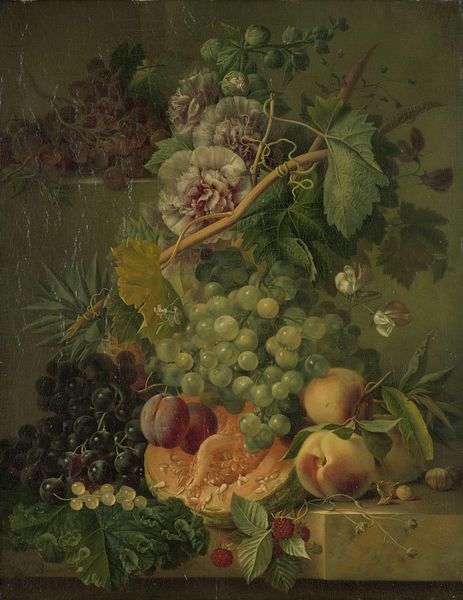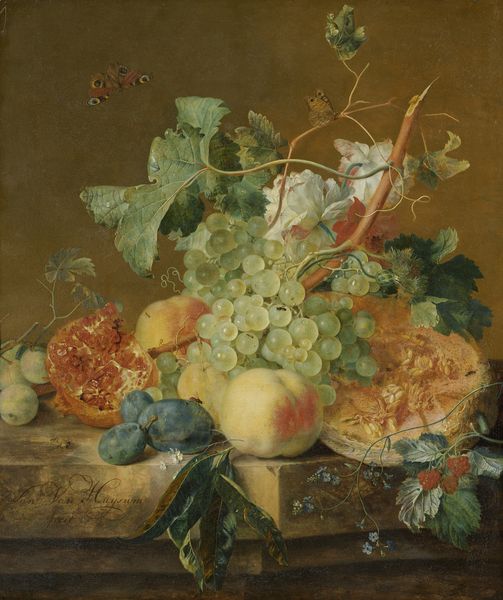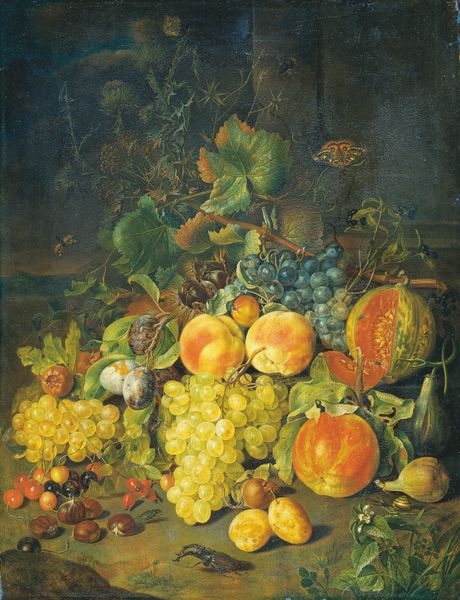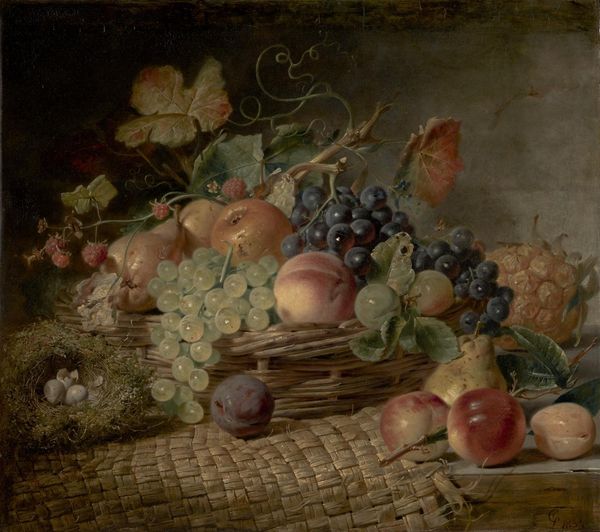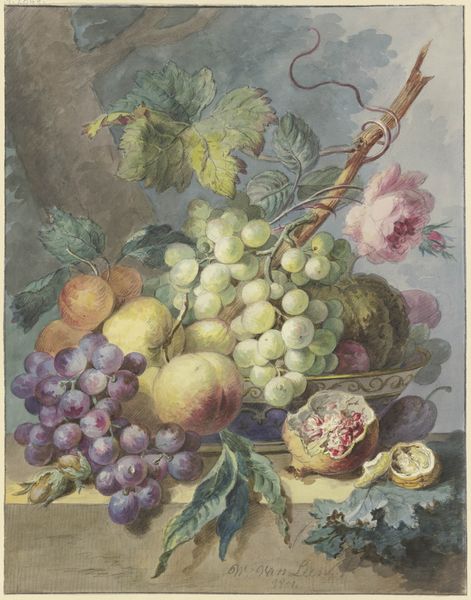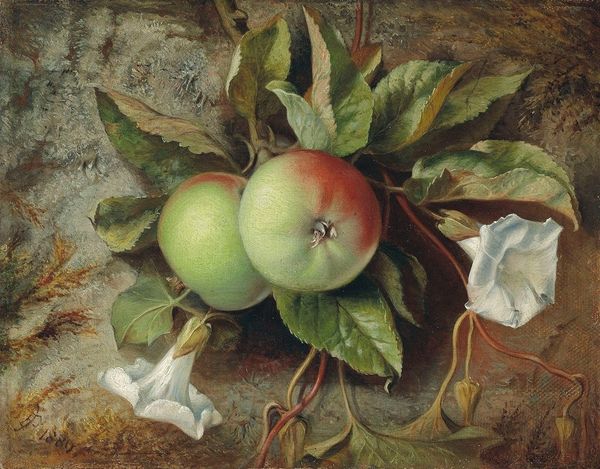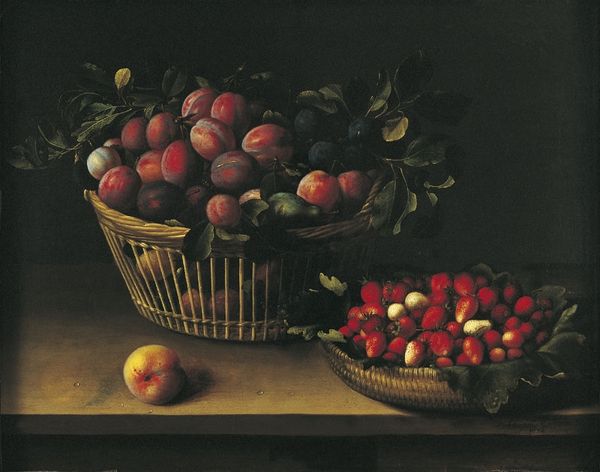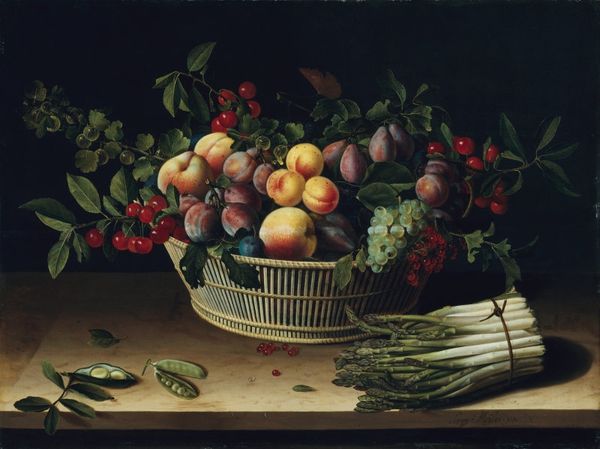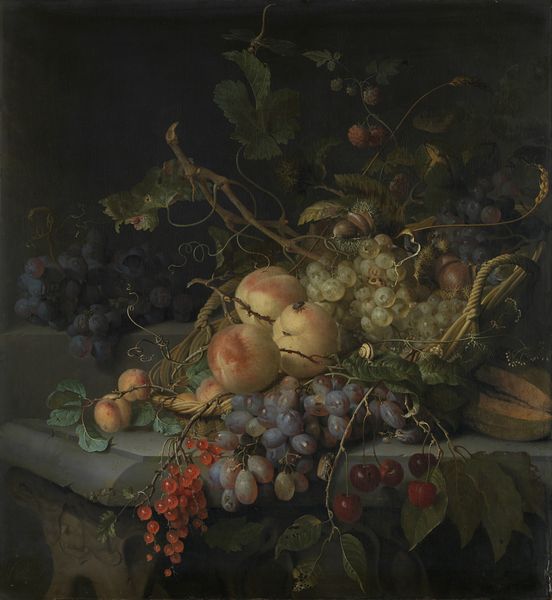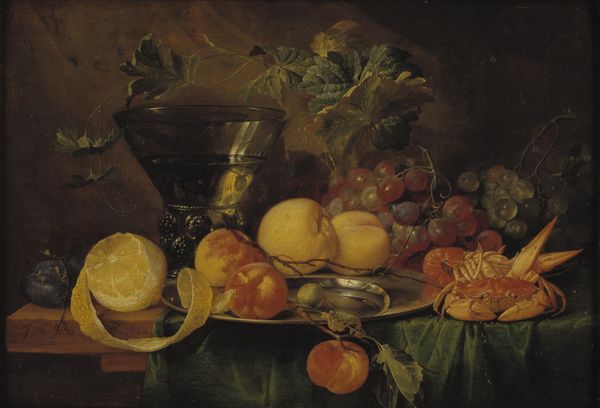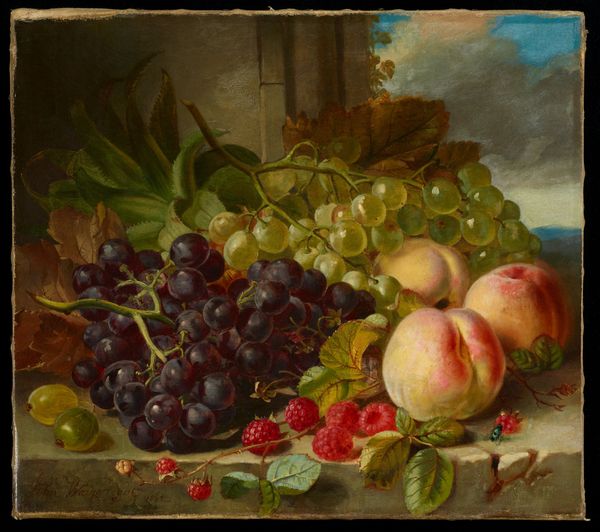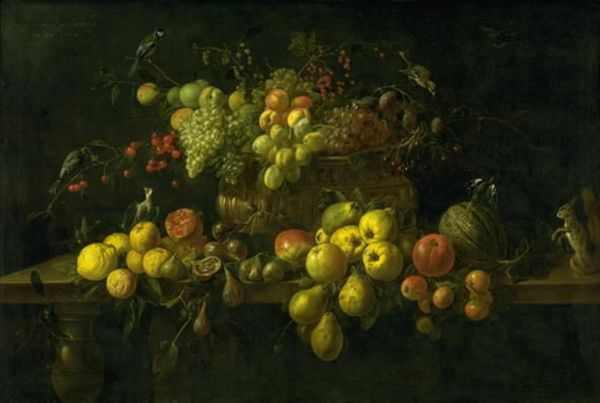
#
gouache
#
abstract painting
#
possibly oil pastel
#
oil painting
#
fluid art
#
acrylic on canvas
#
fruit
#
underpainting
#
painting painterly
#
watercolour illustration
#
watercolor
Dimensions: height 30.2 cm, width 24 cm, thickness 1.3 cm, depth 10 cm
Copyright: Rijks Museum: Open Domain
Willem Hekking painted this "Still Life with Fruit" with oil on panel sometime in the first half of the 19th century. The making of oil paint involves grinding dry pigment into oil, usually linseed, a laborious task done by hand since the Middle Ages. It's a craft-based material, a paste made of tiny mineral grains held in suspension. To paint this still life, Hekking would have applied thin glazes, layering colors to create luminosity and depth. Look at the way he captures the soft bloom on the grapes, and the velvety skin of the peaches. The fruit itself, arranged artfully, speaks to a culture of consumption and display. The painting, with its implied labor of paint preparation and the depiction of cultivated bounty, becomes a testament to both artistic skill and economic prosperity. By considering the materials and the making of this artwork, we understand more about its context, and how it participates in a wider world of labor, skill, and consumption.
Comments
No comments
Be the first to comment and join the conversation on the ultimate creative platform.
